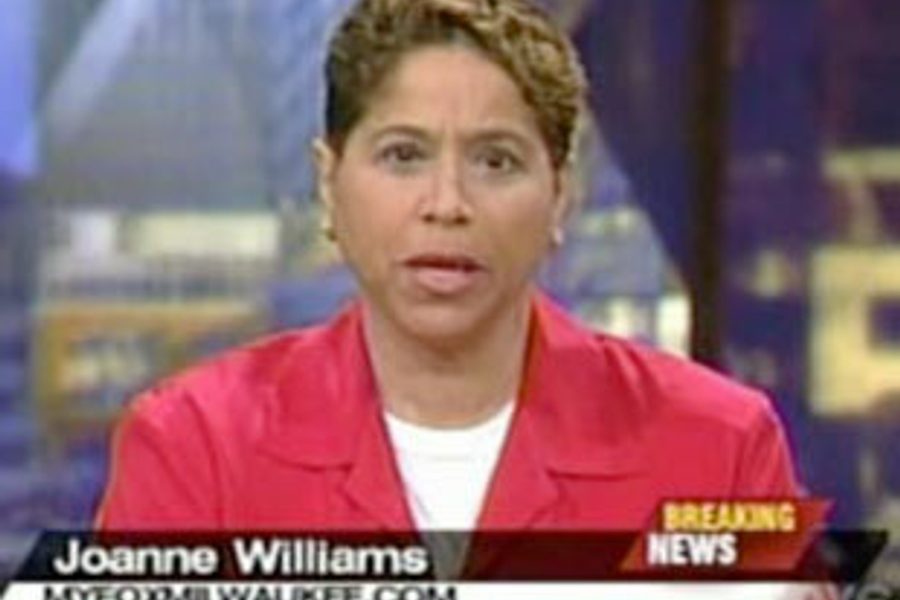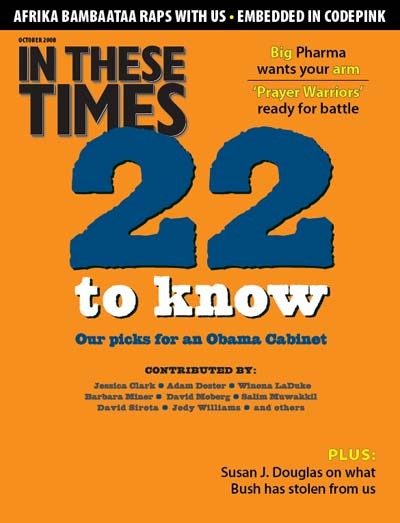Hospital Flacks Spread Fake News
Journalists’ groups are concerned about broadcast outlets using video news releases produced by pharmaceutical companies and healthcare providers
Emily Udell

When Glen Mabie’s boss at WEAU-TV-13 told him he would have to start running stories suggested by a local hospital, featuring its staff and services, Mabie quit in protest.
The agreement with the hospital would have prevented the Eau Claire, Wis., station from using sources from other area hospitals in its stories.
“I was between a rock and a hard place,” says Mabie, who had been news director at the NBC affiliate for a year. “I didn’t want to be insubordinate to my superior and there was no way I could go into the newsroom and tell my staff this is a good thing.”
WEAU ultimately scratched the plan after newsroom employees continued to resist it in the wake of Mabie’s January resignation, he says.
The deal at WEAU was one of several that prompted the Society of Professional Journalists and the Association of Health Care Journalists to announce their opposition to the practice of broadcasting, printing or otherwise disseminating content paid for, or created by, medical providers.
“Content produced by hospitals does not fulfill the duty of news organizations to provide the public with independent medical reporting,” the Aug. 13 statement from the two groups said. “Ethical problems are compounded when media outlets fail to adequately disclose the source of the content, misleading viewers, listeners or readers into thinking it is legitimate news.”
The statement came about five months after a Maryland newspaper sold its weekly health page to a local hospital. The arrangement, which was explained to readers in a column, would have allowed the hospital to provide content for The Capital, an Annapolis daily with 47,000 readers. After publishing one column, the paper backed down in response to community pressure.
The alliance may have been the first of its kind for a print newspaper, but journalists’ groups and ethics experts have raised concerns for years about broadcast outlets using video news releases that are produced by pharmaceutical companies and healthcare providers to look like news reports.
“We don’t really know how big of a problem it is – and that’s part of the problem,” says Andy Schotz, chairman of the Society of Professional Journalists’ ethics committee. “It blends into news coverage in a way that people don’t even know the source of the news they’re getting.”
Eight broadcast reports by the Cleveland Clinic News Service – the PR arm of an Ohio healthcare provider – aired virtually unedited on 26 stations, according to an analysis published last year in the Columbia Journalism Review. Of those 26 stations, 23 were owned by Fox.
These video news releases are often inserted seamlessly into reports produced by a station’s reporters.
“It takes advantages of news organizations that are pretty much pushed to the max,” says Lee Wilkins, an ethics professor at the University of Missouri’s journalism school.
In an era of shrinking budgets and rising demand for content in multimedia, news providers are often searching for ways to increase revenue while putting out more news.
Wilkins says part of the appeal of video releases is that they provide high-quality visual images that journalists have to cut through a lot of red tape to get, such as footage of surgeries. But she says while the reports may provide some good information, they are often one-sided and fail to include relevant facts, such as costs or survival rates associated with a procedure.
“It won’t have in it the kind of information a good health reporter will go and get. And that skews the news,” Wilkins says. “You won’t get that kind of critical, analytical look.”
Health news isn’t the only sector in which partnerships between media outlets and companies have been struck. Last year, after newsroom workers objected, the (Memphis) Commercial Appeal newspaper backed off a plan to pursue a six-part series that would have been sponsored by FedEx. And the Philadelphia Inquirer also launched a column last year sponsored by a local bank.
Schotz says he didn’t know if partnerships between media and companies could specifically be tied to smaller newsroom staffs, but he did say that broadcast news directors who responded to his group’s inquiry about the practice of using provided content said that staffing was a concern.
“The whole news industry is feeling pressure,” he says.
The statement released by the two journalism groups advises media outlets to disclose the source of all information that’s gathered by other entities, to avoid favoring advertisers and sponsors over the competition and to identify clearly the packaged stories produced by healthcare providers as ads.
“The importance is how it’s presented and how it’s labeled,” Schotz says. “If it’s paid for, it’s an advertisement. The importance is thinking about what your readers and viewers and listeners need to know. If this is a paid relationship, why not let them know?”
Former news director Mabie says he was concerned that if a deal like the one proposed at WEAU had taken hold, it would have paved the way for further ethically questionable alliances.
“Things like that are a slippery slope,” he says. “Who’s to say that six months down the road a Lowe’s or a Home Depot isn’t going to come to you and say, ‘Talk to our people and we’ll give you a home improvement segment two times a week’? Then pretty soon your newscast has become, quite literally, a paid commercial.”








